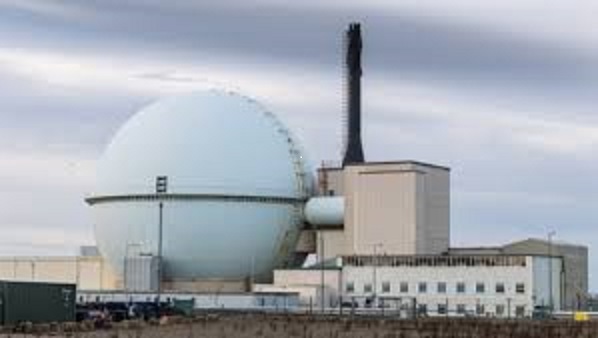One of my hobbies is sailing radio controlled model sailboats. I have always wanted to have a sailboat but family responsibilities, location, and a lack of cash prevented me from realizing this wish. I don’t have much relevant experience of sailing in a full-sized sailboat. Other than my happy days motor boating on Loch Lomond with my brother and parents as a child, my only boating experience was when I was a 17 year old teenager and I spent a few weeks aboard Prince Louis, a 128 foot long, 3-masted schooner.

The cruise I was on consisted of sailing around Scotland’s western islands, and out into the Atlantic as far as St. Kilda. This trip was in November of 1966, it was stormy, freezing, and scary. I especially loved the experience when I was on deck in the wind and rain, while most of my fellow cadets were either in the heads or hanging over the lee rail puking from seasickness. Climbing the rigging or sitting astride the end of the bow-spit while hauling down the outer jib in a gale was more fun than any roller coaster; I loved every minute of it.
When I say I loved every minute of this experience I need to correct myself. I didn’t love being turfed out of my bunk at six o’clock in the morning, stripping stark naked, then running up to the deck to be battered all over by a fire hose supplied with freezing water pumped directly from the sea. It was supposed to toughen us up or at least condition us to the sudden shock of cold water lest we fall overboard. Chances of survival, if you fell overboard were not great in those cold waters, not least because of the time it would take to put the ship about and launch a boat to pick you up.
After my cruise other imperatives took my mind away from boats; I had my exams to pass and entrance to university to gain. I also needed to find a summer job to help pay for my days at university. As it turned out I was at university for quite a while and the thought of boating crossed my mind only rarerly. After graduating I took up the position of a post-doctoral research assistant in a university in the north of England. With a family to take care of, and with a lack of rental housing, I had to smooth-talk the bank into a mortgage so we could buy a small row house within commuting distance of the university. With the mortgage to pay we were as poor as church mice in those times. We certainly had no spare income to spend on sailboats. The position of university research assistant was a precarious one. These positions were used as a holding pattern for young academics waiting for a permanent position. They were temporary with periods of tenure lasting two years. The pay was poor and there was no tenure. By this time I had put aside all thoughts of boating.
After three years I quit academia and got a research job in the aerospace/defense industry in the south of England. When I left that job it was to help set up the UK subsidiary of a US high tech company in the south of Wales. Although I was now getting a bit more affluent, boating never crossed my mind. It didn’t cross my mind again until after I had emigrated to the US with my American employer, left and joined another aerospace company in Texas, and subsequently retired. Throughout this time I was too busy working to think of much else but my weekend golf and a bit of painting now and again.
My wife retired first and we moved into a retirement community where we live today. I stayed working but eventually gave that up too about a year after my wife’s retirement. The community in which we live is notable for its very active lifestyle. It has three golf courses and facilities for just about any other activity you can think of. In retirement, I continued to play golf and to paint but I soon got the RC plane bug. Flying model planes was fun and I particularly liked building them, but there are drawbacks in that you can only fly when it’s not too windy. In Texas, that means in the early morning just after dawn or the evening as the sun is going down. Our airfield is rather short and surrounded by trees on one side and homes on the other, so it’s a challenge to fly larger or faster models.
A couple of years back we had a stretch of windy days where model flying was not possible. It was then that I wandered down to our boating pond to watch the RC sailboats. Somebody persuaded me to try out his boat. This offer it turns out is like a crack dealer hooking a customer. After about ten minutes I was sold on it. This was great fun with no chance of crashing the boat into a million splinters if you lose control of it. Better yet, the more wind the better, and there were races.
After getting home from the pond, a quick trip to the model store on the internet got me ordering a Thunder Tiger, Victoria RC sailboat.

It came in a kit that together with my model plane building experience, wasn’t too hard to put together. The nest week I took my freshly assembled Vic down to the pond. It was as if I had turned up at the company Christmas dance in my fishing gear. They were polite but not impressed. I had lots of advice on how to make my Vic competitive from different RC skippers. The sum total of this advice was to keep the hull, keep the keel, keep the rudder, then throw the rest away to start over. It took me a while to replace the masts and booms with carbon fiber ones. I then had to replace the sail and rudder servos with more suitable variants, throwing away the over-heavy servo mounts that came with the kit. Then it was time to get new sails. These had to be specially ordered from a custom sailmaker. They are made of a tough, lightweight material called TriSpy, in paneled sections that produce in-built curvature into them, and they are not cheap.
With my newly renovated Victoria, I returned to the pond to be greeted with some nods of approval. I got help tuning the rig for the day’s wind conditions, sailed around to warm up, and entered my first race. As the start counter counted down to the start I was all excited to get into the thick of the competition.

Off we went and I was in the bunch sailing on starboard- tack into the wind, headed for the windward mark. I sailed my heart out and finished dead last by about half a leg. It seems that skill and talent supersede expensive gear in the RC sailboat racing business.
Over the few years I have been competing I have managed to improve from being eternally last through to finishing in the middle of the fleet, to winning now and again. I now have four RC sailboats of different classes that I race. I’m still very fond of my Victoria which has been tweaked and modified since its early days. I have a DF-65, perhaps the most popular of the newer classes of RC sailboat, and I have a DF-95 which is the best sailing boat of them all. I recently built a Mistral, US one meter from scratch. Building it was quite the project especially during COVID because I couldn’t buy a suitable keel bulb anywhere, and had to make one by molding it using epoxy resin and lead shot. I also made my own sails. These too are paneled with built-in curvature. The mast is over five feet above the deck and the overall height of the boat from bulb to crane is over six feet.

RC sailboats have low maintenance costs and no marina fees so I can afford to have one. The folks I sail with, many of whom used to sail and race full-sized sailboats, tell me that it’s almost as much fun to race the RC boats as the boats they had before. The rules are mostly the same with some minor differences. It is harder to figure out where you are relative to other boats when sailing RC but collisions cost a great deal less. All in all, I highly recommend trying it. Find your nearest pond and club and go visit. Somebody will let you try it out, and if you are like me, you will get hooked too.


























 John Kerry is a particular case in point. Married to Teresa Heinz an heir to the Heinz fortune, Kerry has a published net worth of over $250 million and has managed to amass 6 houses, 12 cars, 2 yachts, and a private jet. I suspect that despite his privilege he will admonish us commoners to slash our carbon footprint lest we increase the global temperatures by 0.1C over the next half-century.
John Kerry is a particular case in point. Married to Teresa Heinz an heir to the Heinz fortune, Kerry has a published net worth of over $250 million and has managed to amass 6 houses, 12 cars, 2 yachts, and a private jet. I suspect that despite his privilege he will admonish us commoners to slash our carbon footprint lest we increase the global temperatures by 0.1C over the next half-century. usy trying to date that hot cheerleader in high school might notice that the planet’s temperature is currently well below the average over that period. Those who were in the high school smart clique, more interested in getting laid than getting an education, will be wondering what a chart is and what ‘average’ means.
usy trying to date that hot cheerleader in high school might notice that the planet’s temperature is currently well below the average over that period. Those who were in the high school smart clique, more interested in getting laid than getting an education, will be wondering what a chart is and what ‘average’ means. rt thingies. You may again note that today’s temperatures are about as low as they have ever been. It’s also the case that atmospheric CO2 is about as low as it’s ever been. Worse, the CO2 trace doesn’t seem to match the temperature trace very well at all. There are times when CO2 is high but global temperatures are low and times when CO2 is low and global temperatures are high. How can this be?
rt thingies. You may again note that today’s temperatures are about as low as they have ever been. It’s also the case that atmospheric CO2 is about as low as it’s ever been. Worse, the CO2 trace doesn’t seem to match the temperature trace very well at all. There are times when CO2 is high but global temperatures are low and times when CO2 is low and global temperatures are high. How can this be? When challenged they will claim that the computer models prove them correct.They remind me of the scene in the Hitchhiker’s Guide to the Galaxy when the Magratheans built the computer Deep Thought and challenged it to calculate the answer to the ultimate question of life, the universe, and everything. After 7.5 million Deep Thought responded with the answer; 42. I think that John Kerry is to be the head programmer and all the rest of the Biden team will be his acolytes and computer technicians.
When challenged they will claim that the computer models prove them correct.They remind me of the scene in the Hitchhiker’s Guide to the Galaxy when the Magratheans built the computer Deep Thought and challenged it to calculate the answer to the ultimate question of life, the universe, and everything. After 7.5 million Deep Thought responded with the answer; 42. I think that John Kerry is to be the head programmer and all the rest of the Biden team will be his acolytes and computer technicians.

 Amalie Emmy Noether, was born on March 23, 1882, Erlangen, Germany and died on April 14, 1935, Bryn Mawr, Pennsylvania, U.S. She is the first woman scientist I want to introduce you to. She is also the poster child for misogynist intellectual oppression. Her specialty was abstract algebra where she made some of the most creative and fundamental contributions of the 20th century. Einstein said of her after she died, “Noether was the most significant creative mathematical genius thus far produced since the higher education of women began.” Noether’s Theorem which connects conservation laws in physics to the symmetry of the system. This law remains at the cornerstone of modern physics of elementary particles and forces.
Amalie Emmy Noether, was born on March 23, 1882, Erlangen, Germany and died on April 14, 1935, Bryn Mawr, Pennsylvania, U.S. She is the first woman scientist I want to introduce you to. She is also the poster child for misogynist intellectual oppression. Her specialty was abstract algebra where she made some of the most creative and fundamental contributions of the 20th century. Einstein said of her after she died, “Noether was the most significant creative mathematical genius thus far produced since the higher education of women began.” Noether’s Theorem which connects conservation laws in physics to the symmetry of the system. This law remains at the cornerstone of modern physics of elementary particles and forces. Rosalind Elsie Franklin was born 1920 in London, England and died in the same city in 1958. Her most famous and controversial contribution to science was her work on the structure of DNA for which Watson and Crick received the Nobel Prize after using her research findings without her knowledge or permission.
Rosalind Elsie Franklin was born 1920 in London, England and died in the same city in 1958. Her most famous and controversial contribution to science was her work on the structure of DNA for which Watson and Crick received the Nobel Prize after using her research findings without her knowledge or permission.